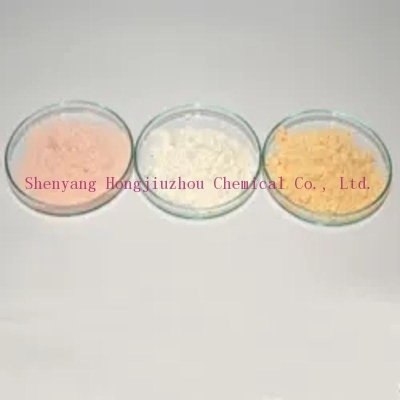-
Categories
-
Pharmaceutical Intermediates
-
Active Pharmaceutical Ingredients
-
Food Additives
- Industrial Coatings
- Agrochemicals
- Dyes and Pigments
- Surfactant
- Flavors and Fragrances
- Chemical Reagents
- Catalyst and Auxiliary
- Natural Products
- Inorganic Chemistry
-
Organic Chemistry
-
Biochemical Engineering
- Analytical Chemistry
- Cosmetic Ingredient
-
Pharmaceutical Intermediates
Promotion
ECHEMI Mall
Wholesale
Weekly Price
Exhibition
News
-
Trade Service
As a functional additive, dispersant is widely used in the stabilization and dispersion of heterogeneous systems such as coatings, inks, pesticides and textile printing pastes
The anchoring section in the dispersant is mostly adsorbed on the surface of the pigment particles by π-π adsorption or metal atom complexation.
In this study, RAFT technology was used in the dioxane system to select DMAEMA and OEGMA monomers, in which the tertiary amine of DMAEMA can be complexed with pigment particles, and the comb-like structure of OEGMA can enhance steric hindrance.
1 Experimental part
1.
2-(Dodecyltrithiocarbonate)-2-methylpropionic acid: analytical grade, Shanghai McLean Biochemical Technology Co.
Gel Permeation Chromatograph: Waters1515, Water Company; Nuclear Magnetic Resonance Spectrometer: Bruker-600, Bruker Technology Co.
1.
Part 1: Weigh 0.
The second part: Weigh 16.
1.
The basic formula of phthalocyanine blue paste is shown in Table 1.
Weigh the formula amount of polymer dispersant (dissolve the prepared block polymer in water to make 40% by mass), phthalocyanine blue pigment, water, zirconium Beads are added to the disperser
.
Shake evenly, put it into a multi-functional shaking disperser, shake for 3 hours
.
Table 1 Basic formula of phthalocyanine blue paste
1.
4 Performance test
The relative molecular mass and distribution of the dispersant were determined by gel permeation chromatography.
Two chromatographic columns were connected in series (TSKgelSuperMentiporeHZM), the flow rate was 0.
35mL/min, the RI detector, the sample mass concentration was 1mg/mL, and tetrahydrofuran was used as the mobile phase.
The column temperature was 40°C; the hydrogen nuclear magnetic resonance spectrum of the dispersant was measured by nuclear magnetic resonance spectrometer, and deuterated chloroform was used as the solvent; the infrared spectrum of the dispersant was measured by Fourier transform infrared spectrometer, and the sample was prepared by the tablet method, and the test range was 4000~400cm- 1; The particle size of the dispersant was measured by a Malvern laser particle sizer, water was used as the dilution solvent, and the rotational speed was 2000 r/min; the viscosity was measured by a rotational viscometer, 63# rotor, 25°C; The color paste was placed in an oven at 55°C, and the changes in viscosity and particle size under different storage times were recorded
.
2 Results and discussion
2.
1 Structural analysis of block polymers
Figure 1 shows the GPC curves of PDMAEMA and PDMAEMA-b-OEGMA.
The higher the relative molecular mass, the earlier the leaching time
.
Fig.
1 GPC curves of PDMAEMA and PDMAEMA-b-OEGMA
It can be seen from Figure 1 that the main leaching time of PDMAEMA is 7~10.
5min, the number average relative molecular mass is 5241, the main leaching time of PDMAEMAb-OEGMA is 6.
6~9.
5min, the number average relative molecular mass is 13439, PDI is 1.
45
.
The two curves are both single peaks, which can indirectly prove that the monomer OEGMA is successfully blocked into the PDMAEMA segment, which excludes the possibility of the coexistence of PDMAEMA homopolymer and OEGMA homopolymer
.
Figure 2 is the H NMR spectrum of PDMAEMA-b-OEGMA
.
Fig.
2 1HNMR spectrum of PDMAEMA-b-OEGMA
It can be seen from Figure 2 that δ=2.
28 corresponds to the -CH3 proton connected to N in the PDMAEMA side chain, and δ=3.
64 corresponds to the -CH2 proton connected to the ether bond in the oligomeric OEGMA side chain
.
Figure 3 shows the infrared spectra of PDMAEMA and PDMAEMA-b-OEGMA
.
Fig.
3 Infrared spectra of PDMAEMA and PDMAEMA-b-OEGMA
It can be seen from Figure 3 that the 1149cm-1 absorption peak in the PDMAEMA curve is the C—N bond in the tertiary amine group, and the 1097cm-1 absorption peak in the block polymer PDMAEMAb-OEGMA curve is the C—O—C in the side chain.
Due to the close position of the two bonds and the high intensity of the C—O—C absorption peak, there is a certain overlap to the C—N bond, but it can be clearly seen from the figure that there is a peak on the right side
.
In conclusion, the block polymer PDMAEMA-b-OEGMA was successfully prepared by the "one-pot method" using the RAFT method
.
2.
2 Application and dispersion properties of block polymers
2.
2.
1 Dispersion of Phthalocyanine Blue
The pigment content in ordinary phthalocyanine blue paste is about 40%.
Under the same conditions and premise of ingredients, using a multi-functional oscillating disperser, select the prepared block polymer dispersant and imported dispersant to prepare phthalocyanine according to the formula in Table 1 After sampling the blue paste, the color paste particle size was tested using a Malvern particle sizer.
The results are shown in Figure 4
.
Figure 4 Particle size distribution of pigment paste
Table 2 Properties of phthalocyanine blue paste prepared by block polymer dispersant and imported dispersant
It can be seen from Figure 4 and Table 2 that the particle size of the phthalocyanine blue slurry prepared by the block polymer dispersant is smaller than that of the commercially available imported dispersant, and the viscosity is low, indicating that the dispersion performance has obvious advantages
.
This is due to the block structure of the block polymer and the excellent anchor-end DMAEMA monomer and comb-type dispersion-end OEGMA monomer
.
2.
2.
2 The effect of block polymer dosage on the dispersion of phthalocyanine blue
The effect of the amount of block polymer dispersant on the particle size and viscosity of the color paste was investigated in the experiment.
The results are shown in Figure 5 and Table 3
.
Figure 5 Effect of dispersant dosage on color paste particle size
Table 3 Influence of dispersant dosage on color paste properties
Combining with Figure 5 and Table 3, it can be seen that with the increase of dispersant dosage, x90 decreases, indicating that the proportion of pigment particles with smaller particle size has increased.
The overall particle size of the pigment particles has little effect, because the adsorption of the dispersant on the surface of the pigment particles is close to saturation, and further increasing the amount of the dispersant has little effect on the anchoring and dispersion of the pigment particles in the color paste system
.
In addition, the viscosity of color paste also decreased with the increase of dispersant dosage
.
Considering the storage stability in the later stage, the dosage of dispersant is 18.
75%
.
2.
2.
3 Storage stability
The thermal storage stability of the colorant with a block polymer addition of 18.
75% was analyzed, and the results are shown in Figure 6 and Table 4
.
Fig.
6 Effect of thermal storage time at 55℃ on colorant particle size and distribution
Table 4 The effect of storage time at 55℃ on the properties of colorants
Combined with Figure 6 and Table 4, it can be seen that the particle size and viscosity of the phthalocyanine blue paste have no significant changes after being stored in an oven at 55 °C for 7 days.
When stored for 15 days, x90 has increased, indicating that the pigments with smaller particle sizes in the color paste system The proportion of particles decreases, while the viscosity increases slightly
.
This is because the sedimentation rate of pigment particles in the color paste system is accelerated with the increase of storage time at 55°C
.
Compared with the stability of the common polymer dispersant, which can only last for 2~3d, the phthalocyanine blue paste dispersed by the block polymer dispersant prepared in the experiment has good thermal storage stability
.
3 Conclusion
Using RAFT polymerization in living/controlled radical polymerization, a comb-type acrylic block polymer PDMAEMAb-OEGMA with a number-average molecular weight of 13439 and a PDI of 1.
45 was successfully prepared by a "one-pot method"
.
The block polymer used as a polymer dispersant has excellent dispersing properties for phthalocyanine blue pigments, mainly in the small particle size, low viscosity, sedimentation resistance and high stability, which is better than the commercially imported dispersants
.
This is the result of the block structure of the block polymer and the combination of excellent anchor-end DMAEMA monomers and comb-type dispersion-end OEGMA monomers
.
The preparation of dispersant can proceed from its structure to further enhance its dispersing performance effect, so as to meet the requirements for higher performance dispersants in the development of water-based coatings
.







